Shodoshima’s Maze Town offers visitors a captivating cultural experience, transporting them through centuries of history. This labyrinth-like settlement, built between the 14th and 17th centuries, boasts a rich architectural heritage and a defensive layout that’s both intriguing and enigmatic. As you explore the winding streets, you’ll uncover the spiritual traditions, industrial past, and awe-inspiring natural landscapes that have shaped this island’s vibrant cultural identity. From the Seiko-ji Buddhist temple to the dramatic Dofuchi Strait, every step of the walking tour promises to reveal the intricate tapestry that makes Shodoshima’s Maze Town a truly remarkable destination.
This experience made our list of the 2 Best Tours In Shikoku Region.
Key Points
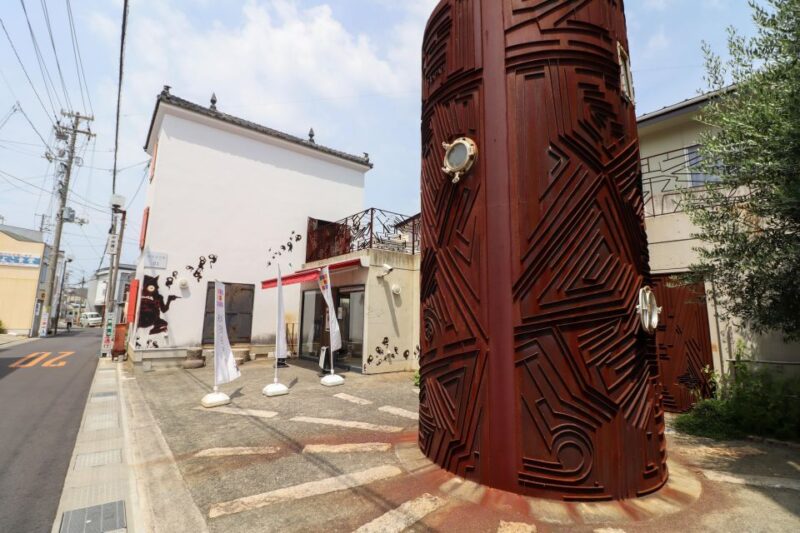
- The 3.5-hour cultural walking tour of Shodoshima’s Maze Town is a small group experience led by an English-speaking guide.
- The tour explores the historic Maze Town, a labyrinth-like settlement built between the 14th and 17th centuries for defense against invaders.
- The tour includes visits to the Seiko-ji Buddhist temple and the Quarry Magistrate’s House, showcasing the town’s spiritual and industrial heritage.
- The tour offers an immersive experience in the town’s historical architecture and defensive layout, including the world’s narrowest strait, the Dofuchi Strait.
- The tour provides a glimpse into Shodoshima’s deep-rooted spiritual traditions, Japanese mythology, and legends through exhibits at the Yokai Art Museum and the Tomioka Shinto Shrine.
Tour Overview
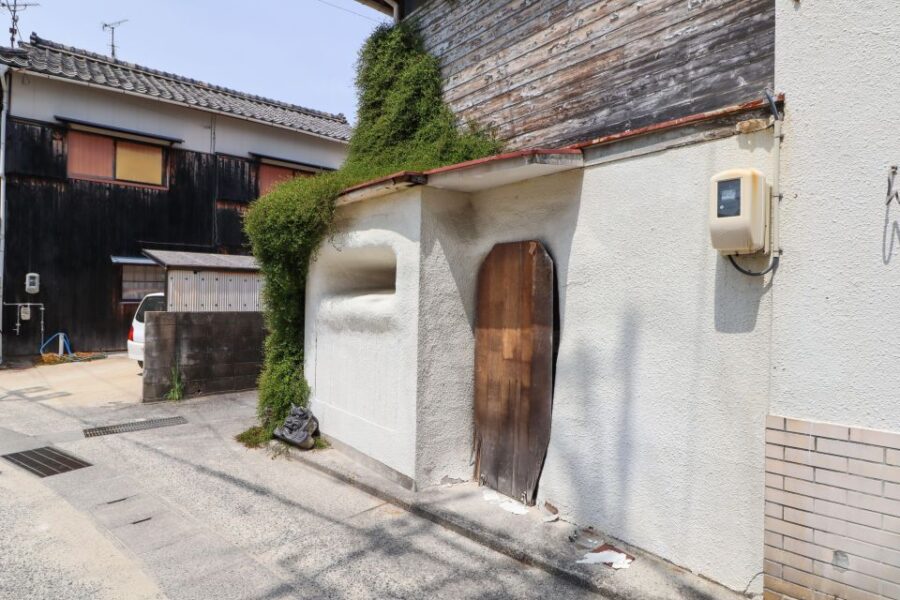
The cultural walking tour of Shodoshima’s hidden attractions lasts 3.5 hours and is a small group experience limited to 8 participants, led by an English-speaking guide.
This immersive tour allows visitors to explore the historic Maze Town, a labyrinth-like settlement built between the 14th and 17th centuries to defend against invaders.
Along the winding paths, the tour includes a visit to the Seiko-ji Buddhist temple and the quarry magistrate’s house, where the rocks used to construct Osaka Castle were once harvested.
Participants will also learn about the Dofuchi Strait, recognized as the world’s narrowest strait by the Guinness World Records, which borders the Maze Town.
You can also read our reviews of more tours and experiences in Shikoku Region.
Maze Town Highlights
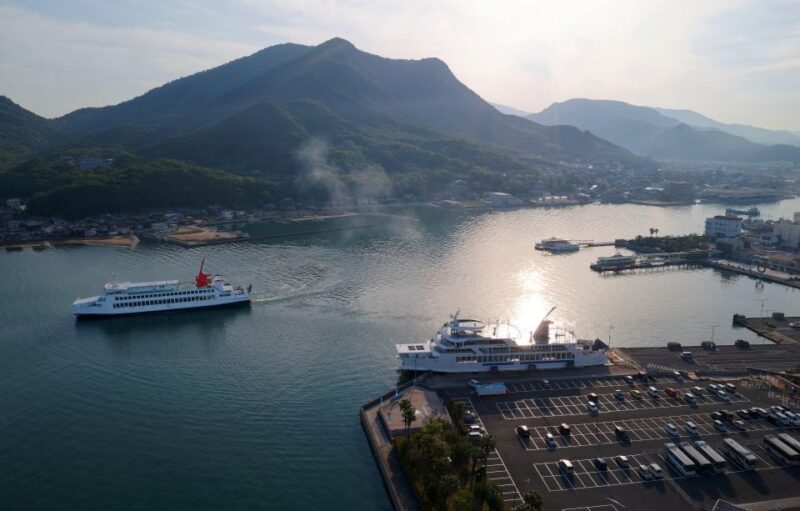
A captivating historical highlight of the Shodoshima cultural walking tour is Maze Town, a labyrinth-like settlement built during the 14th-17th centuries to defend against invaders.
Winding through the town’s intricate pathways, the tour guides visitors to the Seiko-ji Buddhist temple and the quarry magistrate’s house, where rocks used to construct Osaka Castle were once harvested.
Plus, the tour explores the adjacent Dofuchi Strait, recognized as the world’s narrowest strait by the Guinness World Records.
The tour of Maze Town offers:
- An immersive experience in the town’s historical architecture and defensive layout.
- A visit to the Seiko-ji Buddhist temple and the quarry magistrate’s house.
- The opportunity to witness the remarkable Dofuchi Strait, the world’s narrowest strait.
Seiko-ji Buddhist Temple
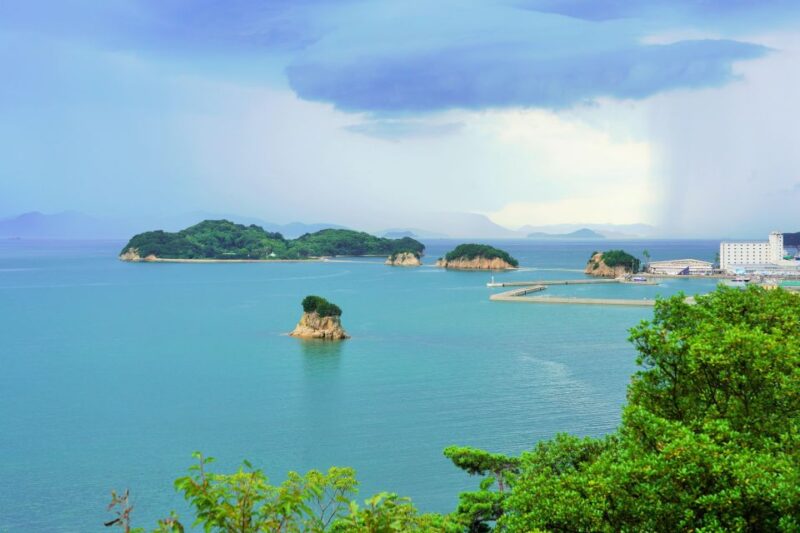
Within Maze Town’s labyrinth-like paths, visitors can find Seiko-ji, a Buddhist temple that has stood as a spiritual centerpiece of the community for centuries.
The temple’s elegant architecture and tranquil atmosphere offer a serene respite from the town’s winding alleyways, inviting travelers to step inside and enjoy the rich cultural heritage of Shodoshima.
The temple’s main hall, adorned with intricate carvings and Buddhist iconography, serves as a gathering place for locals to practice their faith and engage in contemplative rituals.
Exploring the temple’s grounds, visitors can discover small shrines, peaceful gardens, and the ancient tomb that dates back to the Yayoi period, providing a glimpse into Shodoshima’s deep-rooted spiritual traditions.
Quarry Magistrate’s House
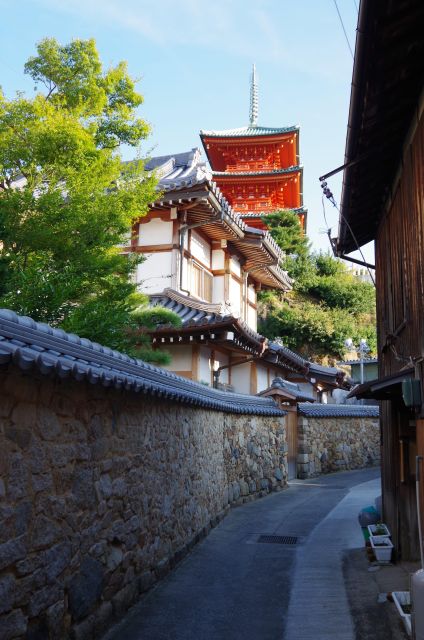
Nestled within Maze Town’s winding alleyways, the Quarry Magistrate’s House offers visitors a glimpse into the town’s industrial past, where the very stones that formed Osaka Castle were once meticulously extracted and transported.
As you step inside, you’ll be transported back in time, with the house’s well-preserved architecture and artifacts providing a fascinating window into the lives of the quarry magistrates who oversaw this vital operation.
The tour highlights:
-
The intricate system of moats and canals used to transport the quarried stones by boat.
-
The magistrate’s living quarters, which reveal the luxurious lifestyle enjoyed by those in charge of this lucrative enterprise.
-
The quarrying tools and techniques employed by the skilled workers who labored to extract the raw materials.
Dofuchi Strait Wonders
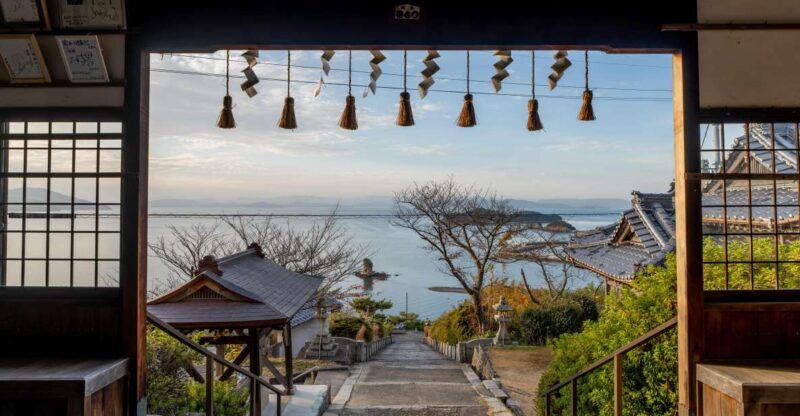
Adjoining the historic Maze Town, the Dofuchi Strait separates Shodoshima from the mainland, earning it the distinct title of the world’s narrowest strait according to the Guinness World Records.
Spanning a mere 300 meters across at its narrowest point, this natural wonder captivates visitors with its breathtaking vistas and unique geological formations.
The dramatic, steep cliffs lining both sides of the strait create a stunning backdrop, while the crystal-clear waters below offer glimpses of the vibrant marine life thriving within.
Traversing the strait by boat or walking along the shoreline trails allows travelers to fully enjoy the awe-inspiring landscape, making it a highlight of the Shodoshima cultural walking tour.
Yokai Art Museum Exhibits
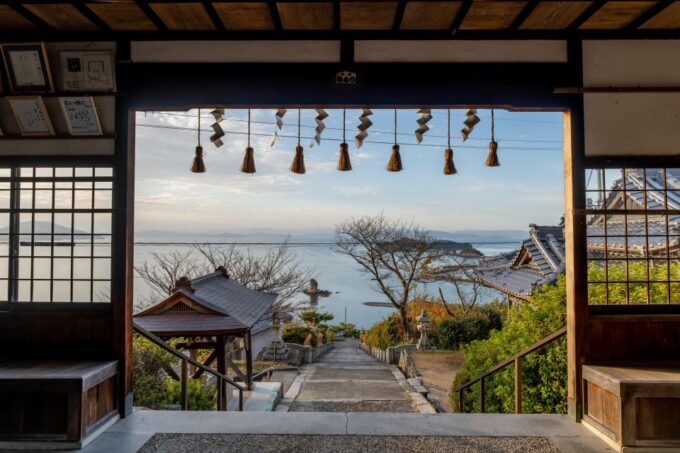
The Yokai Art Museum in Maze Town showcases an impressive collection of over 800 Japanese monsters and folklore creatures, housed in former local residences and fishermen’s warehouses. Visitors can expect to see a mesmerizing array of these supernatural beings, each with its own unique story and cultural significance. The museum’s galleries provide a captivating glimpse into the rich tapestry of Japanese mythology and legend.
Some highlights of the museum include:
-
The menacing Oni, horned demons known for their immense strength and fearsome appearances.
-
The mischievous Tanuki, shape-shifting raccoon dogs celebrated in folklore for their cunning and mischievous ways.
-
The elusive Kitsune, mysterious fox spirits revered for their intelligence and magical powers.
Tomioka Shinto Shrine Features
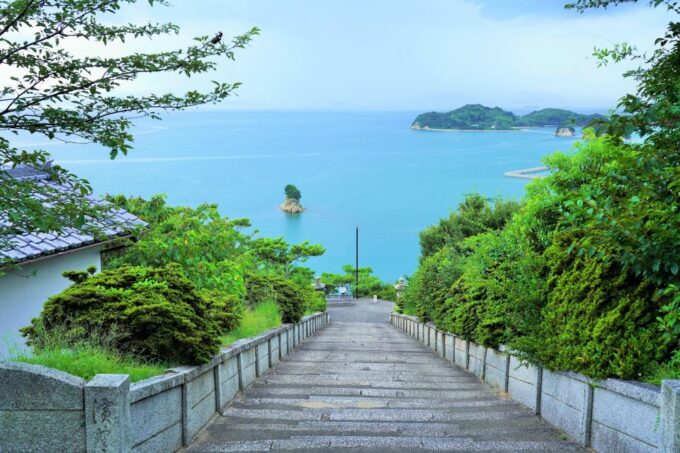
Atop Tonosho Tomioka Mountain stands the over 300-year-old Tomioka Hachiman Shinto Shrine, enshrining an ancient tomb from the Yayoi period (300 BC – 200 AD).
The shrine offers scenic views of the nearby Angel Road beach and features a terraced rock ‘box seats’ amphitheater used for local harvest festivals. These picturesque features make the shrine a highlight of the cultural walking tour.
Visitors can marvel at the shrine’s historical significance and natural beauty, gaining insight into Shodoshima’s rich heritage. The shrine’s blend of ancient mythology and stunning landscape creates a truly captivating experience for those exploring the island’s hidden gems.
Tour Logistics and Policies
The 3.5-hour cultural walking tour of Shodoshima’s hidden attractions has a set start time of 10 AM, with the meeting point at the Gift of the Sun at Tonosho Port.
The small group experience is limited to a maximum of 8 participants, ensuring a personalized and intimate exploration.
The tour includes the guided tour and admission to the Yokai Art Museum, showcasing over 800 Japanese monsters and folklore creatures.
To ensure a comfortable and safe experience, the tour isn’t suitable for babies under 1 year or people over 95 years, and guests are advised to wear comfortable shoes and bring water. No baby strollers are allowed.
Frequently Asked Questions
What Is the Best Time of Year to Visit Shodoshima?
The best time to visit Shodoshima is during the spring or fall. The island’s mild climate and blooming flowers or vibrant autumn foliage make these seasons ideal for exploring the island’s natural beauty and charming towns.
Are There Any Special Events or Festivals in Maze Town?
The Tomioka Hachiman Shinto Shrine in Maze Town hosts local harvest festivals, which feature a terraced rock ‘box seats’ amphitheater. These festivals offer visitors a glimpse into the town’s cultural traditions and celebrations.
Can We Stop for a Traditional Shodoshima Meal During the Tour?
The tour doesn’t include a stop for a traditional Shodoshima meal, but you can explore the local cuisine on your own before or after the tour. The guide can provide recommendations for great places to try the regional specialties.
How Physically Demanding Is the Walking Portion of the Tour?
The walking portion of the tour involves navigating historical labyrinth-like paths and climbing some stairs. While not overly strenuous, participants should be prepared for moderate physical activity and wear comfortable shoes. The tour may not be suitable for those with mobility issues.
Are There Any Discounts or Offers Available for the Tour?
The tour doesn’t seem to offer any discounts or special offers based on the information provided. However, it’s always a good idea to check the tour operator’s website or contact them directly to inquire about any potential promotions or discounts that may be available.
Recap
Shodoshima’s Maze Town offers a captivating culture, where visitors can explore the island’s rich history, from its defensive architecture to its spiritual traditions.
The walking tour provides a glimpse into the vibrant heritage of this picturesque destination, inviting travelers to discover the awe-inspiring natural landscapes and the unique character that define Shodoshima’s enduring legacy.
You can check if your dates are available here: